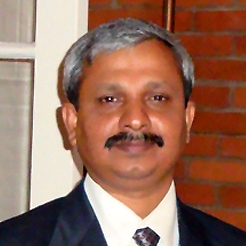
Pranesh Babu K., Senior Vice President, Network and Service Engineering, Sify Technologies throws light on the company’s efforts in the Wi-Max space..
What have been your company’s initiatives in the Wi-Max segment? How is the segment expected to progress in the short term?
Sify was one of the early members of the WiMAX Forum, and has been its active member since 2005. We launched our first Wi-Max infrastructure in February 2007, and the technology has been an integral part of our wireless infrastructure ever since. Today, Sify is one of the largest broadband wireless access providers in India. Wi-Max access infrastructure is an integral part of our last mile strategy to provide our customers with reliable and robust connectivity. We continue to invest in the Wi-Max space to expand our footprint and provide higher bandwidth services to our enterprise customers on wireless.
What is the potential of Wi-Max in the country, given that 3G services will also be launched around the same time?
Wi-Max is a standard that evolved from multiple broadband wireless access solutions that were proprietary in nature. This technology was an alternative to expensive terrestrial connectivity solutions such as copper and fibre, and provided interoperability between multi-vendor equipment, resulting in cost advantages. 3G evolved to provide enhanced data facility to mobile instruments. While Wi-Max is capable of providing reasonable bandwidth speeds to a large number of serious broadband users from a cell site (up to 25 Mbps), 3G supports lower bandwidth per cell site and cannot provide a decent user experience to a large number of serious broadband users from the same cell site (up to 9 Mbps per cell site). Considering that broadband availability and penetration in India are still at a nascent stage, we believe that the two technologies can coexist and cater to different segments of customers.
Should Wi-Max auctions be delinked from the 3G auctions? What other steps can the government take to expedite the mass deployment of Wi-Max in India?
The Wi-Max auction will be held only for three blocks of 20 MHz spectrum per circle. We believe that 20 MHz is not sufficient for providing decent and cost-effective Wi-Max services for any operator, whether internet service providers or mobile service operators. Other countries with much lower population densities have auctioned 30 MHz to 60 MHz per service provider, which is much more realistic. India may today be nowhere among the top 10 countries in broadband subscriber numbers, but it certainly has the potential to be among the top ones. We have more than 11 mobile service providers for each circle, whereas we are only talking of three Wi-Max service providers per circle, which includes both ISPs and mobile service operators. This is totally unrealistic especially considering broadband penetration in India is very low even when compared to the other BRIC countries or other developing nations. The government should delink Wi-Max from 3G and defer the auction till a reasonable amount of spectrum per service provider can be allocated at a viable cost, and also increase the number of service providers per circle to at least five, to do justice to broadband penetration.
What are the key bottlenecks hindering the uptake of this technology in the country?
The pricing of Wi-Max spectrum has to be viable and realistic. With the clubbing of Wi-Max spectrum and mobile spectrum, DoT has declared a base price of Rs 17.5 billion for the Wi-Max spectrum, and that is totally unrelated to the size of the broadband market. With bidding, the price has nearly doubled to Rs 30 billion. At this price, its deployment for broadband services becomes an issue due to the cost at which these services will be provided as well as the ability to recover those costs. Therefore, the extent to which broadband penetration can be increased will be limited by the price at which it is made available.
On the other hand, if the Wi-Max spectrum auction is delinked from mobile spectrum and priced at Rs 2 billion as a base price, it is more in relation to the size of the broadband market. With bidding, it rises to about Rs 4 billion. At that price, combined with aggressive pricing of broadband services, there may be a 10 per cent increase in broadband penetration. This will result in a 1.3 per cent to 1.5 per cent increase in GDP, according to recent studies conducted by the World Bank and by BCG Telenor.
India’s GDP is at a trillion dollars today. Therefore, a 1.3 per cent increase will amount to a minimum of Rs 150 billion, which is five times the benefit of pricing spectrum at a much higher level. The government must understand this perspective. Broadband penetration today is a measure of a country’s competitiveness, and unless we view this in the national interest, we will be increasingly left behind other economies.
Our large rural population will not have access to Wi-Max anytime soon, as carrying services to these areas will not be economically viable. The government should look into rural broadband separately with lower royalty or royalty-free spectrum.